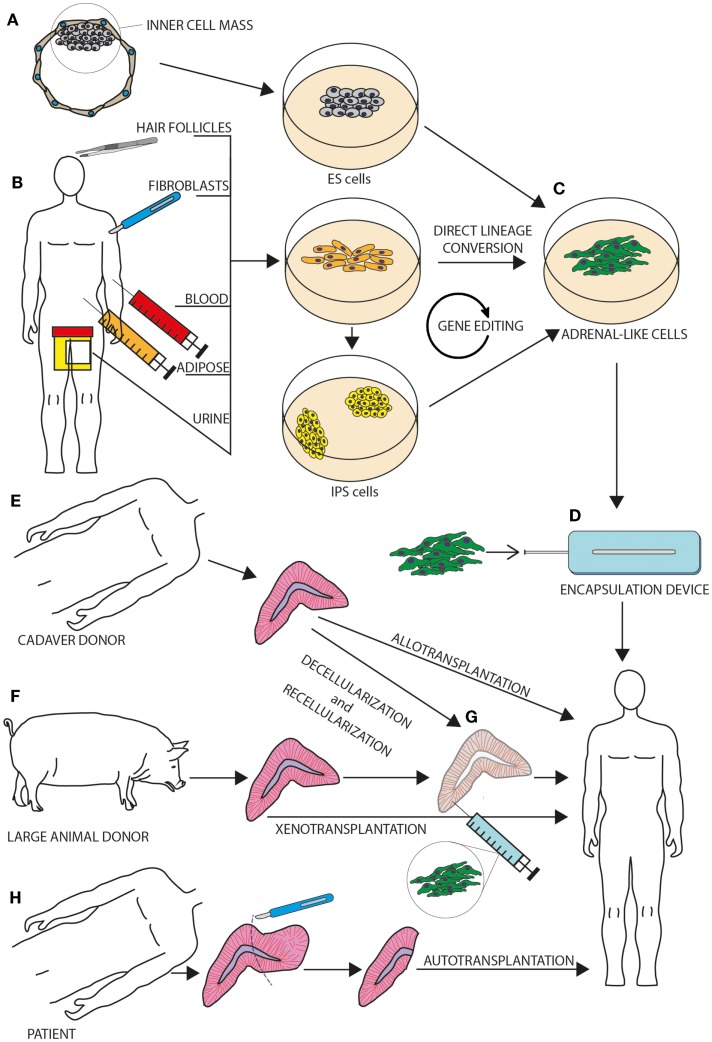Figure 1.
This figure outlines novel and tested strategies for the treatment of adrenal insufficiency. Human embryonic stem (ES) cells (A) as well as somatic cells (such as fibroblasts, hair follicle dermal papillae, adipose tissue-derived stem cells, and urine-derived stem cells) established from human donors (B) can be cultured in vitro and induced to acquire an adrenocortical phenotype (C) through specific differentiation protocols. A gene-editing step can be included in case of monogenic disorders. Reprogramed cells that have successfully acquired an adrenocortical phenotype could then be implanted back into a donor, either inside an encapsulation device (D) or inside a decellularized adrenal of human or large-animal origin (G). While autotransplantation (H) has been trailed in humans in pioneering surgery during the 1960s (see text) and allotransplantation (E) has been a poorly tested option, xenotransplantation (F) has never been tested in humans.

